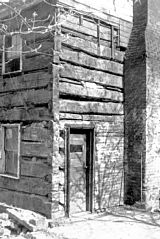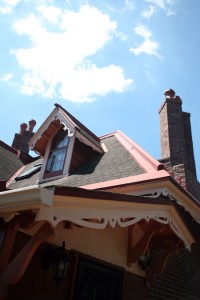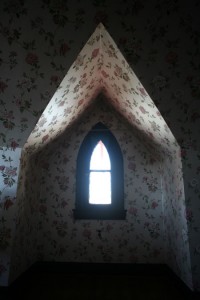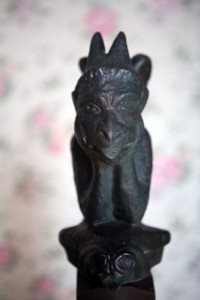
Category Archive: Architecture & Architects
-
Downtown’s Union Trust building gets major tenant
Tuesday, August 05, 2008 -
Union Trust gets first major tenant
By Sam Spatter
FOR THE TRIBUNE-REVIEW
Tuesday, August 5, 2008Downtown’s Union Trust Building on Monday obtained its first major lease since it was purchased by new ownership — with Siemens Engineering signing a 10-year lease to occupy three to six floors in the landmark building.
Siemens Engineering, a unit of Siemens AG, is consolidating its local environmental engineering operations in the building, said Jeremy Kronman, executive vice president of CB Richard Ellis, who headed a team that represented the owner, MIKA Realty Group of Los Angeles.
“We will relocate about 500 Siemens people from 441 Smithfield St. and Oxford Centre, both Downtown, along with personnel in the Crane Building in the Strip District, starting in October and complete it during November, and add several hundred more jobs as we grow,” said Siemens Engineering President Tony DoVale.
In February, Siemens received $2.95 million in state aid in return for a pledge to create 550 jobs within three years. It said at that time that a $5 million expansion project could triple its local operations.
Kronman said the office space leased by Siemens could accommodate up to 1,200 workers.
The 600,000-square-foot building, undergoing a major renovation, was purchased by MIKA Realty Group in February for $24.1 million and was 99 percent vacant. It formerly had been occupied by Mellon Bank as an operations center.
“This tenant is a natural fit with the nature of this development: Siemens’ focus on environmental engineering directly matches our vision of a LEED-rated corporate facility of the highest quality,” said Michael Kamen, principal of MIKA Realty Group, and his investment partner, Jerry Fox, in a statement.
As part of the upgrading of the 11-story building, MIKA has placed a $250,000 scuptured tree in the lobby as “an indication of the rebirth of the building.”
Other improvements that are part of the remodeling include a new lobby, new restrooms, installation of a lower-level parking facility, upgrades to conference facilities and 325-seat theater/auditorium, new exterior lighting, new storefronts and exterior cleaning.
Kronman indicated that other leases may be forthcoming for the building but declined to identify the companies.
Formerly known as Wheelabrator Air Pollution Control Inc., Siemens is a custom manufacturer of air pollution control equipment and systems for industrial and utility applications.
Representing Siemens were Gerry Dudley, Kurt Mrazik, Paul Novello and Jeff Babikian of CBRE’s Corporate Services Group.
Sam Spatter can be reached at sspatter@tribweb.comor 412-320-7843.
-
Pittsburgh’s Union Trust building finally gets major tenant
by Ben Semmes
Pittsburgh Business Times
August 4, 2008The Union Trust Building in Downtown Pittsburgh has secured a major office tenant at last.
Siemens Power Generation Inc. will consolidate about 500 local employees on three floors at the nearly 600,000-square-foot, 11-story structure — formerly known as Two Mellon Center. It has been mostly vacant since Mellon Financial Corp. pulled its employees out of the property in May 2006.
The 185,000-square-foot lease, which puts a significant dent in one of Pittsburgh’s largest office vacancies, will run for 10 years at the 501 Grant St. building, according to the Pittsburgh office of CB Richard Ellis Inc., which represented both the building’s owner and Siemens in the deal.
Orlando, Fla.-based Siemens Power Generation’s local operations, known collectively as Siemens Environmental Systems and Services, have employees at three Pittsburgh sites: 441 Smithfield St., Downtown; One Oxford Centre, at 301 Grant St., also Downtown; and 40 24th St., in the Strip District.
Earlier this year the state pledged $2.95 million in grants and tax credits to Downtown Pittsburgh-based Wheelabrator Air Pollution Control Inc., the division of Siemens Power Generation based at 441 Smithfield St., to assist with a $5 million expansion. The company agreed to hire at least 550 employees over three years as part of the expansion.
The company will begin moving into the Union Trust Building later this year with full occupancy set for the fourth quarter of 2008.
A Siemens spokesperson was not immediately available for comment Monday.
Simultaneously, the building’s new owners — California investors led by Los Angeles-based Mika Realty — are conducting an extensive renovation of the property with plans for LEED certification, a new lobby and installation of a lower level parking facility.
Serving as an operations center for Mellon Bank since the mid-1980s, the Union Trust Building was originally constructed between 1915 and 1917 by steel magnate Henry Clay Frick as a shopping arcade.
bsemmes@bizjournals.com | (412) 208-3829
-
Repairs under way on Schenley fountain
By The Tribune-Review
Wednesday, July 30, 2008Restoration has begun on a landmark fountain in Schenley Plaza, the Pittsburgh Parks Conservancy said Tuesday.
The fountain sculpture, titled “A Song to Nature,” created by Victor David Brenner, was dedicated 90 years ago to acknowledge Mary Schenley’s gift and later sale of land to become Schenley Park.
Brenner is perhaps best known as the designer of the Lincoln penny. The figures on his bronze fountain — his first large-scale public project — are an allegorical depiction of culture taming nature.
Conservancy president and CEO Meg Cheever said an inspection of the fountain found corrosion, staining and cracks. Its plumbing stopped functioning in spring.
The restoration, expected to be completed by October, will include repairs, cleaning, plumbing, paving and landscaping. A gift from The Benter Foundation will provide lighting for the fountain and plaza.
In addition to The Benter Foundation, money for the restoration is coming from the Allegheny Regional Asset District, the Howard E. and Nell E. Miller Foundation, National Endowment for the Arts, The H. Glenn Sample Jr. MD Memorial Fund through the PNC Charitable Trust Grant Review Committee, and the Juliet Lea Hillman Simonds Foundation.
-
Repairs under way on Schenley fountain
By The Tribune-Review
Wednesday, July 30, 2008Restoration has begun on a landmark fountain in Schenley Plaza, the Pittsburgh Parks Conservancy said Tuesday.The fountain sculpture, titled “A Song to Nature,” created by Victor David Brenner, was dedicated 90 years ago to acknowledge Mary Schenley’s gift and later sale of land to become Schenley Park.Brenner is perhaps best known as the designer of the Lincoln penny. The figures on his bronze fountain — his first large-scale public project — are an allegorical depiction of culture taming nature.
Conservancy president and CEO Meg Cheever said an inspection of the fountain found corrosion, staining and cracks. Its plumbing stopped functioning in spring.
The restoration, expected to be completed by October, will include repairs, cleaning, plumbing, paving and landscaping. A gift from The Benter Foundation will provide lighting for the fountain and plaza.In addition to The Benter Foundation, money for the restoration is coming from the Allegheny Regional Asset District, the Howard E. and Nell E. Miller Foundation, National Endowment for the Arts, The H. Glenn Sample Jr. MD Memorial Fund through the PNC Charitable Trust Grant Review Committee, and the Juliet Lea Hillman Simonds Foundation.
-
Pittsburgh council OKs historic status for Malta Temple
By Jeremy Boren
TRIBUNE-REVIEW
Wednesday, July 30, 2008In a preliminary vote today, Pittsburgh City Council dubbed the 81-year-old Malta Temple building on the North Side a historic structure.The historic status prevents the Salvation Army, the owner, from demolishing the building without the Historic Review Commission’s consent. The nonprofit religious organization had planned to raze it and build a $5 million social services center in its place.Councilman Ricky Burgess was the sole voice of dissent in the 8-1 vote in favor of historic status. He said the building qualifies as a church and shouldn’t have the historic designation forced upon it.
The Mexican War Streets Society, a neighborhood group, nominated the building for historic protection to preserve the neighborhood’s historic appeal.
Jeremy Boren can be reached at jboren@tribweb.comor 412-765-2312.
-
Historical Society wants to rebuild oldest structure in South Fayette
Thursday, July 24, 2008That hardly sounds new in 2008, but Mr. Cardillo was a boy in the 1930s, so the house was only about 60 years old. It was connected to the old house — a 1780s structure built of hand-squared timbers that served the Cardillo family as a kitchen.

The family tore the old house down in 1950 to make way for a more convenient, modern kitchen.
That’s hard to imagine now, when preservation is such a hot topic, but “that’s just the way it was then,” Mr. Cardillo said. “It was considered ‘progress.'”
The Cardillos’ old house was saved by a retired colonel who lived nearby. He wanted to rebuild the house on his own property, so the Cardillos gave him the timbers.
The colonel never got to his rebuilding project, however, and when he died about 10 years later, Mr. Cardillo — by then married and raising a family in a home of his own nearby — carted the timbers to his own barn and stored them. That was almost 50 years ago and the timbers are still there.
The South Fayette Township Historical Society would like to change that, however. It is asking the township to donate a site so it can re-erect the two-story, 16-by-26-foot structure and use it to educate the public about the lives of early settlers.
The society had Roger Weaver, a historical architect who works extensively in Old Economy Village and in earlier Harmonist settlements in Butler County, authenticate the timbers. He said the builders were German, and the date was between 1780 and 1820.
The historical society is touting the house as the oldest structure in South Fayette.
Mr. Cardillo, now 82, is all for getting it reassembled.
“We would have put it up ourselves, but no one would have lived in it,” he said. “This way it would be for the public, on public land, so people could see how it was in the old days.”
Mr. Cardillo said he has a number of antiques — a washtub stand, a 1900 forge, a shingle horse, a coal cook stove and others — that could go in the house.
Restoring it to its original form, though, will take a bit more work.
“The original door was only about five feet high,” he said, and the windows were more like gun ports, square openings the size of the ends of the timbers.
The door and windows were made larger and an extra door cut later, he said, making it more livable in the late 19th and 20th centuries. He’s been on the lookout for some old timbers that could be used in restoration, he said, but new ones might have to be cut, hand-hewn and blended in.
Mr. Cardillo also has in storage the timbers from another building, a small mortise-and-tenon barn dating from about 1900, that could also be erected for historical use. The barn was part of the Boys’ Industrial Home of Western Pennsylvania and was torn down a couple of years after the Boys’ Home closed in 1972.
The Boys’ Home, which opened in 1901 to care for orphaned and troubled boys, had about 312 acres of land, including the ridge looking down over the Cardillo holdings. The township bought the property in 1987, sold about 100 acres for development and is in the process of protecting 167 acres as permanent farm land — half of which is farmed by the Cardillos.
The rest of the property — about 50 acres — will be park land, devoted mostly to trails and other low-impact uses.
That park land is one potential site for the log house. That would give it a permanent place and would keep it near its original location.
The historical society, however, has other ideas.
“People never go by the Boys’ Home and won’t even see it,” President Emily Williamson-Brady said at a commissioners’ meeting July 14. The society wants to put it up along Miller’s Run Road, in front of the township building.
Township officials, however, were wary of putting something so permanent on that site. The township needs more space and may want to use that land for something else.
“We don’t know yet what we’re doing here,” Commissioner Sue Caffrey said. “I don’t know that we want to put it there and then need that land for expansion.”
Other society members backed Ms. Willliamson-Brady, insisting on the Miller’s Run Road site, and after some comments were exchanged, township Manager Mike Hoy said he would come up with a list of potential sites for consideration.
Ms. Caffrey helped found the society in 2003, served as its first president, and was the first to talk with Mr. Cardillo about getting the log house as a donation.
The society wants to have the question settled so it can start raising funds for the work.
As for Mr. Cardillo, he said he can see both sides — he likes the idea of the house being at the Boys’ Home park, near its original site and in an authentic farm setting, but also likes the idea of maximizing the number of visitors. The Miller’s Run Road site is near Morgan Park, a busy, high-intensity recreational site.
“I want it to stay in South Fayette,” he said. Beyond that, he doesn’t much care, “as long as I get it out of the barn.”
Freelance writer Greg Suriano contributed to this article. Brian David can be reached atbdavid@post-gazette.com or 412-722-0086.First published on July 24, 2008 at 6:12 am -
Heathside Cottage’s mystery adds to its appeal
By Bob Karlovits
TRIBUNE-REVIEW
Saturday, July 19, 2008 It sits atop Fineview, peering over Downtown like one of the gargoyles that lurk through the house.
It sits atop Fineview, peering over Downtown like one of the gargoyles that lurk through the house.
Jack Miller from the Pittsburgh History & Landmarks Foundation knows some of the history of the home — known as Heathside Cottage — that could have been on its perch before the Civil War. It is dated 1855 on a plaque near its bay window, but continuing research debates that."The story is in the bricks," Miller says with a sigh.
 Charm from the 19th century is an obvious feature of the home the foundation has up for sale. The two-bedroom home with solidly repointed brick, plastered walls and decorative wood inside and out is being marketed at $189,900.
Charm from the 19th century is an obvious feature of the home the foundation has up for sale. The two-bedroom home with solidly repointed brick, plastered walls and decorative wood inside and out is being marketed at $189,900.The home, which had a guest spot in Rick Sebak’s 1977 "North Side Story," also has a one-car garage, a stylistically matching shed, a bricked patio and a garden area that once was a dilapidated home next door.
"I love it," says filmmaker Sebak about the home. "It is the kind of house that just makes you want to visit and spend some time there."The home is small with high ceilings in its two main levels, but low ones in the basement where former owner Judith Harvey hung signs saying: "The ceiling is low, the archways lower, anyone over 5 feet, DUCK."
Upstairs, the 10- and 11-foot ceilings give space to rooms that otherwise are tight and small. It is not a home for big parties, big people or big families.
The first floor consists of a kitchen-dining room, parlor and den. Upstairs are two bedrooms and a bath, with a skylight over the staircase adding another touch of airiness to the home.
The outside is dominated by ornate, wooden trim that Miller jokes earned the home the name of the "witch’s house" from neighborhood kids.
Harvey, who is retired, serves as librarian of the Frank B. Fairbanks Rail-Related Archive for the foundation. She moved out of the home at the end of June.
 Harvey bought the home in 1992 as a project to restore. After her husband died in 1996, she moved in permanently and continued her work, adding ornamental gargoyles as she went. In 2000, she entered into an arrangement with the foundation known as a retained life estate.
Harvey bought the home in 1992 as a project to restore. After her husband died in 1996, she moved in permanently and continued her work, adding ornamental gargoyles as she went. In 2000, she entered into an arrangement with the foundation known as a retained life estate.Under that arrangement, Miller says, the title of the home was transferred to the foundation, but she retained the right to live there. She remained responsible for taxes and maintenance, but received a charitable income-tax deduction.
She also received a similar deduction this year for the unused part of her donation to the foundation. History & Landmarks officials then received control of the property to manage or market whatever way they wished,
Harvey does not want to discuss matters, but Miller says he believes she simply grew tired the work that comes along with taking care of a property.
Al Tannler, director of historical collections for the History & Landmarks, says no data exists on the construction of the home. But it may be related to a cluster of like homes called Evergreen Hamlet in Ross.
Col. James Andrews, a self-taught stone mason and engineer, bought the Fineview property in 1862, so Tannler believes he "had the home built and may have named it" Heathside, which shows up on a stone above the bay window.
He did work for Joseph Kerr (1816-1888), an architect who designed the Gothic Revival Evergreen Hamlet homes. Therefore, Tannler suggests, Kerr is a likely suspect for the design of Heathside.
That whole story, though, puts it behind the 1855 date, but that doesn’t matter too much, he says.
 "It’s significance is its rare quality," he says, "and the fact that it is one of a few of its kind."
"It’s significance is its rare quality," he says, "and the fact that it is one of a few of its kind."Bob Karlovits can be reached at bkarlovits@tribweb.com or 412-320-7852.
